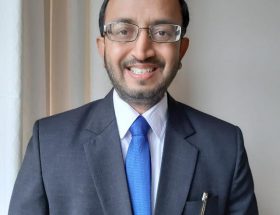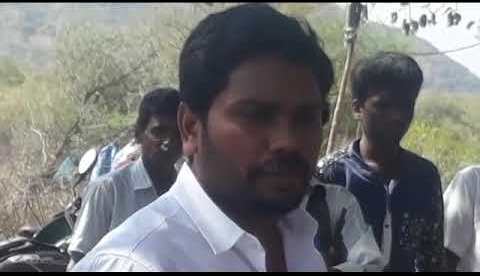Gursimran Singh
 It has been the popular demand of Sikhs since long that there is a need to amend Article 25 (2) (b) of the Constitution as it denies to them a separate distinct religious identity. The controversy is primarily around Explanation II to this article which states that “…..the reference to the word Hindu in sub-clause (b) of clause (2) shall be construed as including a reference to persons professing the Sikh, Jain or Buddhist religion, and the reference to Hindu religious institutions shall be construed accordingly.”
It has been the popular demand of Sikhs since long that there is a need to amend Article 25 (2) (b) of the Constitution as it denies to them a separate distinct religious identity. The controversy is primarily around Explanation II to this article which states that “…..the reference to the word Hindu in sub-clause (b) of clause (2) shall be construed as including a reference to persons professing the Sikh, Jain or Buddhist religion, and the reference to Hindu religious institutions shall be construed accordingly.”
There are two questions which need to be answered. 1. Whether the Explanation II takes away the distinct religious identity of Sikh religion? 2. Will the removal of Explanation II in anyway negatively affect the representation of Scheduled Castes among Sikhs? This write up will try to answer and clarify on both these controversies.
The sub-clause (1) of Article 25 states that all the persons have the right to profess, practice and propagate their religion subject to public order, morality and health. Further sub-clause (2) states that the state is free to make laws for (a) regulating or restricting any economic, financial , political or other secular activities which may be associated with religious practice and (b) providing for social welfare and reform or throwing open of Hindu religious institutions of public character to all classes and sections of Hindus.
An important element to the conversation is Explanation I of the article which states that “the wearing of Kirpan shall be deemed to be included in the profession of the Sikh religion.” Explanation I allowing wearing of Kirpan becomes essential for Sikhs as without it Sikhs would have been subject to various Criminal Laws (Arms Act, etc.) Reading Explanation I makes it clear that the Sikh religion has been separately given this privilege and the article specifically uses the phrase “….Sikh religion” making it clear that Sikh religion is in this explanation considered a distinct religion.
However as has been said earlier the controversy is around Explanation II. It is necessary to understand that the explanation II construes Sikhs, Jains and Buddhist as Hindus only for understanding Article 25(2) (b). Article 25(2) (b) has its own importance as the Hinduism (read: Brahmanism) had denied entry to various castes in their places of worship for centuries. The denial of entry to various castes itself had institutional basis in the religious texts written and propagated by Brahmins. However the same was never the case with Sikhism. Denial of entry never had institutional or religious basis in Sikh religion. Then the question arises as to why it was necessary to even include them and their religious institutions under Article 25(2) (b) in the form of Explanation II?
It is necessary to go back to the Constituent Assembly debates to understand the same. Explanation II does not exist in the original draft constitution under the then Article 19(relating to freedom of religion). The inclusion of Explanation II is nowhere discussed or debated in all of the debates. The amended and accepted draft article also has no mention of the same and this explanation only appears in the final text of the constitution. The only possible explanation of its inclusion is that the drafting committee must have included it later on.
In my opinion it was not necessary to even have Explanation II for this article as entry to places of worship was never an institutional issue of Sikhism. The article 25(2) (b) was sufficient in itself to deal with the issue of temple entry among Hindus. Regardless, even if the purpose of Explanation II is to ensure the entry of individuals in Sikh or Buddhist religious institutions, then the constitution maybe amended in the manner as recommended by the National Commission to Review the Working of the Constitution, 2000.
Explanation I on the one hand gives separate religious identity to Sikhism and Explanation II covers them under the Hindu fold for the purpose of Article 25(2) (b). It is necessary to make clear that Explanation II in no way takes away the separate and distinct identity of Sikh religion. Its removal will in no manner provide any material gain to the Sikhs or do any material harm to the Scheduled Castes among Sikhs. There are two distinct issues here, one of aspirations of Sikhs and second of reservations related to scheduled castes among Sikhs.
The removal of Explanation II is not related to any material gains but to the aspirations of the Sikh community. Sikh Community considers Sikh religion as a distinct religion, having its own set of values and culture. It is well known agenda of the Dwij Castes (Twice born Castes) and their political, social and religious organizations which denies to Sikh religion a distinct identity. The personal opinion of any individual or for that matter any organization as such has little effect, however the problem emerges when this opinion becomes institutionalized through the Constitution of the nation. The popular opinion among Sikhs is that the Explanation II to Article 25(2) (b) is an attack on their distinct identity. This opinion may not be entirely correct however the explanation does leave a trace of symbolism which serves the agenda of Dwij-Savarnas.
And here emerges the second issue associated with this explanation which has been used by the Dwij-Savarna political parties to resist the attempt of Sikhs to remove Explanation II. The issue is this: The removal of Explanation II would also mean that Scheduled Castes among Sikhs will have to forgo the reservation given to them in the Constitution. The argument of the Dwijs is simple, that caste system is present only in Hindu religion. Removal of Explanation II from Article 25 would mean exclusion of Sikhs from Hindu fold. This would lead to change of religion of Scheduled Castes among Sikhs and if the Scheduled Castes change their religion to a religion other than Hindu it will lead them to forego these reservations.
The argument is clearly very misleading. Firstly, Article 25 has no connection with reservations given to the Scheduled Castes among the Sikhs or for that matter to any other religion. The list of the scheduled castes is given by President of India (Article 341) and that list is the deciding factor as to which castes can claim reservations.
Secondly, this debate whether scheduled castes among Sikhs will be given reservation or not is an issue which has been decided by the Constituent assembly itself. In the Report of Advisory Committee on Minorities it was made clear that the Mazhabis, Ramdasis, Kabirpanthis, Sikligars were to be included in the list of Scheduled Castes which was to be issued by the President after the promulgation of Constitution.
It is further necessary to point out that the Sikhs in the Constituent assembly had foregone all their demands and had secured this demand of reservation for including backward classes among Sikhs in the Scheduled Castes etc. This inclusion was done in opposition of several members of the assembly at the assurance of Sardar Patel to the Sikhs.
It is necessary to also commend the far sightedness of the Sikhs of that time that they realized the material conditions of the former untouchable castes who had converted to Sikhism. It was rather easy for them to be caste blind and ignore the material conditions of these classes among Sikhs for making a statement that there is no caste in Sikhs. The Sikh leaders on the contrary vehemently argued the case for inclusion of these Sikhs in the Scheduled Castes. The conclusion is that this debate of reservation to Scheduled Castes among Sikhs is independent of the debate around amendment of Explanation II to Article 25 (2) (b).
It is necessary to understand why such non-argument is being given importance by the Brahminical political parties. The answer is simple. They simply don’t want the scheduled castes to opt for other emancipatory religions. This is the reason they have been using the argument that if Explanation II is foregone then the Mazhabis, etc will be removed from the list of scheduled castes. This serves their purpose as it creates an issue among non-SC and SC Sikhs. The Scheduled Castes among the Sikhs need to realize the façade of this argument and confront these Brahmanical parties.
~~~
Gursimran Singh is student of B.A. LLB (Hons).










